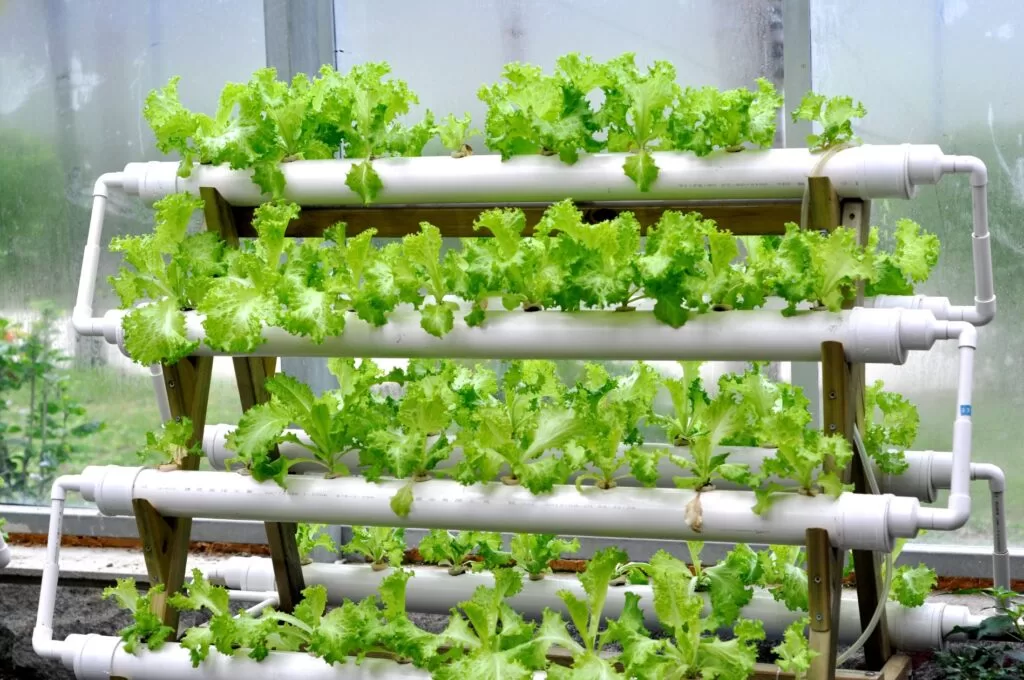Bonsai trees can be grown without soil, using techniques such as hydroponics or aeroponics. In these methods, the roots of the tree are suspended in a nutrient solution or mist, rather than being planted in soil. However, traditional bonsai cultivation involves growing the tree in a small pot filled with a well-draining bonsai soil mixture.
In hydroponic bonsai, the roots of the tree are suspended in a container filled with a nutrient solution. This can be done in a variety of ways, such as using a tray filled with the solution, or by suspending the roots in the solution using a mesh net pot. The nutrient solution is typically made up of water and a variety of dissolved minerals, such as nitrogen, potassium, and phosphorous. This method allows for greater control over the tree’s nutrient intake, and can be useful for trees that are difficult to grow in traditional soil mixtures.
Aeroponic bonsai, on the other hand, involves suspending the roots of the tree in a container and misting them with a nutrient solution. This method allows for even greater control over the tree’s nutrient intake, as the mist can be finely calibrated to deliver the precise amount of nutrients the tree needs. However, it also requires more maintenance, as the misting system must be kept running at all times.
Both hydroponic and aeroponic bonsai cultivation can be challenging, and may not be suitable for all types of bonsai trees. Traditional bonsai cultivation using a well-draining bonsai soil mixture is generally considered the most straightforward and reliable method, and is recommended for beginners.
Table of Contents

Can bonsai trees grow in just water?
Bonsai trees can technically survive in just water, but they will not thrive without proper nutrients. Bonsai trees need a variety of nutrients, such as nitrogen, potassium, and phosphorous, to grow and develop properly. These nutrients are typically found in the soil, but when growing bonsai in just water, these nutrients need to be provided through the water. This can be done by adding a nutrient solution to the water, which contains the necessary minerals and elements for the bonsai tree to grow.
However, growing bonsai trees in just water is not a traditional or recommended method for bonsai cultivation. Bonsai trees typically require well-draining soil mixture, which allows the roots to receive enough oxygen, and prevents waterlogging. Also, bonsai trees are miniature trees and they require the same conditions as a normal tree, such as sunlight, temperature, humidity, and a well-draining soil. So, keeping bonsai tree in just water for a long term is not recommended as it can negatively impact the health and growth of the tree.
How long do you leave a bonsai in water?
The duration of time that you should leave a bonsai in water can vary depending on the species of tree and the method of cultivation being used. For traditional bonsai cultivation in soil, the tree should be watered when the soil is dry to the touch. The frequency of watering can vary depending on factors such as temperature, humidity, and the size of the pot, but it is usually done every 1 to 3 days.
For hydroponic or aeroponic bonsai cultivation, the tree should be kept in the nutrient solution or mist at all times. The solution or mist should be changed or refreshed regularly, typically every 1-2 weeks. However, it is important to closely monitor the tree’s condition, as the roots can quickly become waterlogged if left in the solution for too long.
In general, it is important to avoid over-watering bonsai trees, as this can lead to root rot and other problems. It is better to underwater than to overwater. You should always check the soil moisture and adjust your watering schedule accordingly.
It is also important to note that, it’s not recommended to keep bonsai trees in water for long term as it can negatively impact the health and growth of the tree. Keeping a bonsai tree in water for a short period, such as when re-potting or during a period of drought, is fine. But this should be done under close supervision and with appropriate care.

Do bonsai trees like small pots?
Bonsai trees are traditionally grown in small pots, but the size of the pot should be appropriate for the size and species of the tree. The main purpose of using a small pot for bonsai is to restrict the growth of the root system, which helps to keep the tree small and maintain its miniature form. However, using a pot that is too small can limit the tree’s ability to absorb the necessary nutrients and moisture, which can negatively impact its growth and health.
It’s important to ensure that the pot is large enough to accommodate the tree’s root system without overcrowding it. The size of the pot should be proportional to the size of the tree, and should allow for enough soil to hold enough water and nutrients.
The tree should be re-potted every 2-3 years, or when the tree outgrows the pot. In general, during the re-potting process, you should select a pot that is slightly larger than the current pot, but still small enough to maintain the miniature form of the tree.
In summary, Bonsai trees can be grown in small pots, but it’s important to choose the right size of the pot that is appropriate for the size and species of the tree, and to re-pot it every 2-3 years.
What is the best bonsai tree for beginners?
There are many different types of bonsai trees that are suitable for beginners, but some popular choices include:
- Ficus: The Ficus species, such as the Ficus microcarpa, are very hardy and easy to care for. They have small leaves and a thick trunk, which makes them well suited for bonsai cultivation. They can tolerate a wide range of temperatures and lighting conditions and are relatively easy to shape.
- Chinese Elm: The Chinese Elm is another popular choice for beginners. It has small leaves, a thick trunk and a good branching structure. It is also very hardy and easy to care for.
- Juniper: The Juniper is a hardy and versatile tree that can be grown in a variety of styles. It has small, needle-like leaves and can be trained into a variety of shapes.
- Chinese Black Pine: The Chinese Black Pine is a hardy and slow-growing tree that can be trained into a variety of shapes. It has small, needle-like leaves and a thick trunk.
- Money Tree: The Money Tree is a hardy, tropical tree that is easy to care for and shape. It has a thick trunk and small leaves, which makes it well suited for bonsai cultivation.
It’s important to note that bonsai trees require patience and time to develop, and it’s important to research and understand the specific care requirements of the tree species before starting. It’s also important to select a tree that is appropriate for your climate and can be grown indoors or outdoors.

Why are bonsai trees so hard to keep alive?
Bonsai trees are not necessarily harder to keep alive than other types of plants, but they do require specific care and attention. Some reasons why bonsai trees might be harder to keep alive include:
- Soil: Bonsai trees require well-draining soil that can hold enough water and nutrients. Using the wrong type of soil, or not providing the right amount of water, can lead to root rot and other problems.
- Pruning: Bonsai trees require regular pruning and shaping to maintain their miniature form. If not done correctly, pruning can damage the tree and inhibit its growth.
- Lighting: Bonsai trees require the right amount of light to thrive. Most bonsai trees need to be placed in a spot where they can receive direct sunlight for a certain period of time, but not all day.
- Temperature: Bonsai trees require a specific range of temperatures to survive and thrive. Some species may be more tolerant of temperature fluctuations than others.
- Humidity: Many bonsai trees require a specific range of humidity levels to survive and thrive.
- Pests and Diseases: Bonsai trees, like any other plants, are vulnerable to pests and diseases, which can be hard to detect and treat.
By providing the right care, such as the right type of soil, proper pruning, appropriate lighting, temperature and humidity, and keeping an eye out for pests and diseases, bonsai trees can be kept alive and healthy. It’s also important to research and understand the specific care requirements of the tree species before starting.
How to take care of bonsai trees to keep them alive and healthy:
- Soil: Bonsai trees require well-draining soil that can hold enough water and nutrients. A good bonsai soil mixture typically contains a combination of components such as akadama, pumice, and lava rock. These components provide good drainage and aeration for the roots, while retaining some water and nutrients. It is also important to ensure that the soil is moist but not waterlogged, and to adjust the watering schedule accordingly.
- Pruning: Bonsai trees require regular pruning and shaping to maintain their miniature form. This includes pinching new growth, cutting back long branches, and removing dead or diseased branches. It is important to use sharp, clean pruning tools and to avoid over-pruning, which can damage the tree and inhibit its growth.
- Lighting: Bonsai trees require the right amount of light to thrive. Most bonsai trees need to be placed in a spot where they can receive direct sunlight for a certain period of time, usually between 4 to 6 hours, but not all day. Indoor bonsai trees need to be placed near a window that receives good natural light. It’s important to avoid placing them in a spot where the sunlight is too intense or where the temperature fluctuates greatly.
- Temperature: Bonsai trees require a specific range of temperatures to survive and thrive. Some species may be more tolerant of temperature fluctuations than others, but generally speaking, bonsai trees prefer temperatures between 60 to 80 degrees Fahrenheit during the day and between 50 to 60 degrees Fahrenheit at night.
- Humidity: Many bonsai trees require a specific range of humidity levels to survive and thrive. This is especially true for tropical and subtropical species. To increase humidity, you can place a tray of water near the bonsai tree, mist the leaves regularly or use a humidifier.
- Pests and Diseases: Bonsai trees, like any other plants, are vulnerable to pests and diseases. Common pests include spider mites, scale insects, and aphids. Common diseases include root rot, powdery mildew, and leaf spot. It’s important to keep an eye out for any signs of pests or diseases, such as discolored leaves or small spots, and to take action immediately if any are found.
It’s also important to note that, bonsai trees require patience and time to develop, and it’s important to research and understand the specific care requirements of the tree species before starting. As a beginner, it’s always a good idea to start with a hardy species that is easy to care for and shape, such as a Ficus, Chinese Elm, Juniper or Chinese Black Pine.







